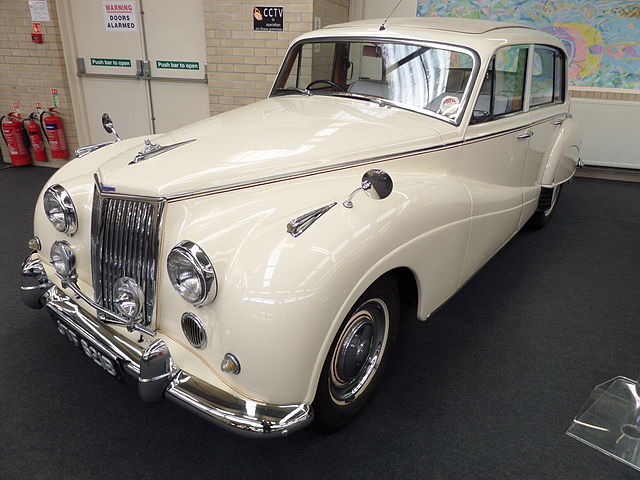-
Insurance
InsuranceAbout our productsLearn about insuringGet a quote Get current values, historical values, model history and more.
-
Valuation
ValuationHagerty valuation toolLook up a vehicle value Get current values, historical values, model history and more.
-
Events
EventsHagerty official eventsHagerty ClubhouseEvent calendar
-
Entertainment
EntertainmentMore to explore
- Portal login
1960 Armstrong Siddeley Star Sapphire
Mk I 4dr Saloon 4 L
Vehicle values by condition
Fair
Condition 4
£12,600
#4 cars are daily drivers, with flaws visible to the naked eye. The chrome might have pitting or scratches, the windshield might be chipped.
Good
Condition 3
£17,100
#3 cars could possess some, but not all of the issues of a #4 car, but they will be balanced by other factors such as a fresh paint job or a new, correct interior.
Excellent
Condition 2
£21,200
#2 cars could win a local or regional show. They can be former #1 cars that have been driven or have aged. Seasoned observers will have to look closely for flaws.
Concours
Condition 1
£29,500
#1 vehicles are the best in the world. The visual image is of the best car, unmodified, in the right colours, driving onto the lawn at the finest concours.
Insurance premium for a
1960 Armstrong Siddeley Star Sapphire Mk I 4dr Saloon 3990
valued at £17,100
£141.79
/ year*
History of the 1958 - 1960 Armstrong Siddeley Star Sapphire

1958 - 1960 Armstrong Siddeley Star Sapphire
The Armstrong Siddeley Star Sapphire is a four-door, five/six-seater saloon, or a seven/eight-seater limousine with a front engine driving the rear wheels. Production ran from 1958 to 1960 and the Star Sapphire is frequently considered to be the finest of all Armstrong Siddeley’s cars.
The Star Sapphire was launched in October 1958 and could be distinguished from its Sapphire 346 Mk II predecessor by its new radiator grille and forward-hinged front doors. The engine was now enlarged to 3.9 litres, automatic transmission and power assistance for the recirculating ball steering were standard equipment, and – a first for Armstrong Siddeley - there was servo-assisted front disc brakes. At the back were drum brakes and the suspension was independent front coil springs and wishbones with a live rear axle with semi-elliptic springs. The cabin was exceptionally well-apportioned and included a separate heater for the rear passengers.
In 1960, Armstrong introduced a Star Sapphire limousine with manual transmission, a single carburettor engine while a raised boot line could accommodate the motor for the optional air conditioning; automatic transmission and an electric division were optional extras. In that year, Armstrong Siddeley built a prototype twin-headlamp Mk II saloon – it survives today - before their car manufacturing ended.
The Star Sapphire saloon was powered by a 3,990cc S6 OHV unit with twin Zenith carburettors or a single Zenith carburettor on the limousine. The Star Sapphire saloon had a three-speed Borg Warner DG box. This was optional on the Star Sapphire limousine, which was usually fitted with a four-speed manual all-synchromesh box.
The Armstrong Siddeley Star Sapphire can be fairly regarded as the culmination of the company’s post-war car-making – a brilliantly engineered luxury conveyance that could be driven like a sports car. The saloon is, somewhat inevitably, far easier to find than the limousine. The potential owner should look out for issues with the braking system, worn suspension, corrosion of the chassis, door bottoms and sills. A further issue can be the refurbishing of the interior – not only is it lavish, owners often specified individual items of trim, such as wool headlining.
Alternatives to the Star Sapphire include the Bentley S1, the Daimler Majestic, the Jaguar Mk IX, the Princess DS7 4-Litre, and the Rover P5 3-Litre.
Hagerty Newsletter
Get your weekly dose of car news from Hagerty UK in your inbox

ADVERTISEMENT